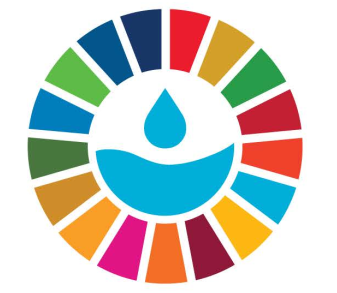Waiaroha - Heretaunga Water Discovery Centre
Hastings District Council
(
Local / Regional Government
)
#SDGAction54104
Description
In 2016, the Havelock contamination crisis made it clear our district's water supply was vulnerable to pollutants getting into the aquifer from above ground. That realization led to the Hastings Drinking Water Strategy, a programme of major works which the Waiaroha facility is a critical part of.
Drinking water treatment
Most cities build their water collection and treatment facilities in far-flung suburbs. We have put ours right in the centre of Hastings. That means we can draw water straight from the aquifer under the site, and show and explain the treatment process to our visitors.
Waiaroha's two huge black tanks each hold 5 million litres of drinking water. That means we'll have extra clean, safe water on tap when the city needs it, in a drought, or after a quake or flood.
Sustainability
We designed our landscaped outdoor area with sustainability in mind.
Native rain gardens and permeable concrete soak up water to reduce run-off into the stormwater system. Rainwater is re-used to flush our toilets and solar panels help to power our discovery centre.
Investing in our future
We're passionate about sparking curiosity through hands-on learning, science and mātauranga Māori.
Waiaroha is a place where adults and kids can explore together, discuss new ideas and get inspired about the future. Our purpose-built discovery centre supports tamariki and teachers.
MEDIA RELEASE HASTINGS DISTRICT COUNCIL 207 Lyndon Road East, Hastings 4122 Private Bag 9002, Hastings 4156 Phone 06 871 5000 | Fax 06 871 5100 hastingsdc.govt.nz | customerservice@hdc.govt.nz TE KAUNIHERA O HERETAUNGA Waiaroha concepts released for community feedback Concepts for Hastings’ Waiaroha water treatment and storage facility have been released for public feedback today by Hastings District Council. The plans are strongly focused on keeping Hastings water safe – for people, the environment and the economy - now and into the future. The primary purpose of the facility, on the corner of Southampton St East and Hastings St South, is to enable Hastings to meet national drinking water standards through enhanced water safety, improved resilience, and additional capacity, said Council’s director major projects delivery Graeme Hansen. But it has an important added purpose, said Hastings mayor Sandra Hazlehurst. “Waiaroha will be a place where we, as a community, can develop a full understanding of our water ecosystem, from the hills to our west, along our streams and rivers, through our aquifers and wetlands, to our taps and out to the ocean.” The concept development team had engaged with educationalists and iwi, who agreed the facility would make an important contribution to an in-depth understanding of water and its management. “It will help us all learn more about this critically important resource and will be of real value to our next generations; the ones who will be managing this precious resource into the future,” said Mrs Hazlehurst. Set in landscaping that reflects water’s journey from the hills to the sea, the water treatment and storage facility will include two water storage tanks and a treatment building, said Mr Hansen. Through its integrated indoor/outdoor education elements, Waiaroha will provide in-depth information on things like how Hastings drinking water is treated to keep people safe, provide ‘live’ information on water testing, and give everyone access to information on waterways and aquifers.
Ngati Kahungunu Iwi (Local Māori Tribe) have worked collaboratively with the Hastings District Council over 3 years to design and deliver a drinking water treatment plant and water storage facility that celebrates cultural knowledge of water through creative on-site art and storytelling.
SDGS & Targets
Goal 6
Ensure availability and sustainable management of water and sanitation for all
6.1
By 2030, achieve universal and equitable access to safe and affordable drinking water for all
6.1.1
Proportion of population using safely managed drinking water services
6.2
By 2030, achieve access to adequate and equitable sanitation and hygiene for all and end open defecation, paying special attention to the needs of women and girls and those in vulnerable situations
6.2.1
Proportion of population using (a) safely managed sanitation services and (b) a hand-washing facility with soap and water
6.3
By 2030, improve water quality by reducing pollution, eliminating dumping and minimizing release of hazardous chemicals and materials, halving the proportion of untreated wastewater and substantially increasing recycling and safe reuse globally
6.3.1
Proportion of domestic and industrial wastewater flows safely treated
6.3.2
Proportion of bodies of water with good ambient water quality
6.4
6.4.1
Change in water-use efficiency over time
6.4.2
Level of water stress: freshwater withdrawal as a proportion of available freshwater resources
6.5
By 2030, implement integrated water resources management at all levels, including through transboundary cooperation as appropriate
6.5.1
Degree of integrated water resources management
6.5.2
Proportion of transboundary basin area with an operational arrangement for water cooperation
6.6
6.6.1
Change in the extent of water-related ecosystems over time
6.a
6.a.1
Amount of water- and sanitation-related official development assistance that is part of a government-coordinated spending plan
6.b
Support and strengthen the participation of local communities in improving water and sanitation management
6.b.1
Proportion of local administrative units with established and operational policies and procedures for participation of local communities in water and sanitation management
SDG 14 targets covered
| Name | Description |
|---|
Deliverables & Timeline
Resources mobilized
Partnership Progress
Feedback
Action Network

Timeline
Entity
SDGs
Region
- Asia and Pacific
Other beneficiaries
Communities, teachers, local residents, farmers and owners of agriculture and horticulture businesses of the region.
More information
Countries
Contact Information
Rebecca, Waiaroha Education Programme Coordinator

